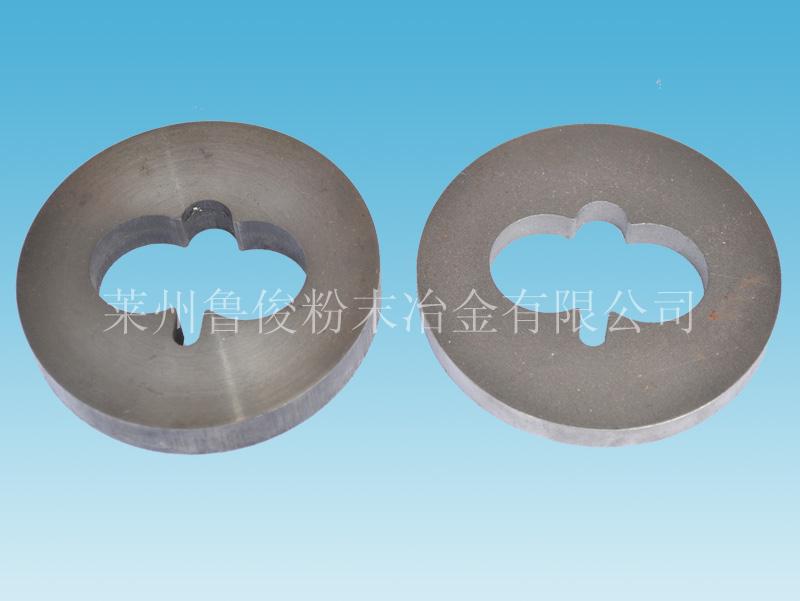Common alloying elements in Iron-based powder metallurgy
- Categories:Industry News
- Author:
- Origin:
- Time of issue:2022-06-08
- Views:
(Summary description)In Iron-based powder metallurgy materials, alloying elements play an important role. In addition to C, Cu element is the most widely used alloying element. In addition, alloying elements such as Ni and Mo also play a role in strengthening material properties.
Common alloying elements in Iron-based powder metallurgy
(Summary description)In Iron-based powder metallurgy materials, alloying elements play an important role. In addition to C, Cu element is the most widely used alloying element. In addition, alloying elements such as Ni and Mo also play a role in strengthening material properties.
- Categories:Industry News
- Author:
- Origin:
- Time of issue:2022-06-08 15:10
- Views:
In Iron-based powder metallurgy materials, alloying elements play an important role. In addition to C, Cu element is the most widely used alloying element. In addition, alloying elements such as Ni and Mo also play a role in strengthening material properties.

Iron-based powder metallurgy manufacturers tell you that Ni is considered to be a beneficial element as an element that can reduce the expansion effect of Cu. It can provide high strength, high toughness and good hardenability, high resistance, high corrosion resistance. At normal sintering temperature, most Ni and Fe can only diffuse in solid state, and the diffusion rate of Ni in Fe matrix is much lower than that of main alloying elements such as C, Cu, and Mo, resulting in uneven distribution of Ni in austenite. , and as a strong austenite stabilizing element, Ni element can slow down the transformation of pearlite on the one hand, and play the role of refining pearlite and increasing the content of pearlite; Iron-based powder metallurgy manufacturers tell you another On the one hand, a complex nickel-rich structure will be produced in the nickel-containing sintered steel during the cooling process, which has a great influence on the properties. Even after quenching, the Ni-rich region is still austenite, and the Ni-rich structure is usually enough to strengthen the matrix and maintain a certain toughness and ductility. In many cases, the compound addition of Cu and Ni can obtain the best comprehensive mechanical properties.
Iron-based powder metallurgy manufacturers tell you that C content is the most critical variable when choosing a heat treatment process to increase the strength of sintered steel. The C content is controlled by the graphite added to the powder mixture and the atmosphere during the sintering process. It affects the macroscopic properties of the material by affecting the content of each phase in the microstructure. For Fe-C composition alloys, generally in the carbon content of 0.8 At wt. %, the strength reaches the maximum value, and when the content is too high, network carbides will be formed at the grain boundaries and pores, causing obvious embrittlement effect.
Mo can greatly improve the hardenability of sintered steel and is the most commonly used solid solution strengthening element in Fe-based powder metallurgy materials. It has the effect of refining pearlite structure and dispersion strengthening. Mo can also promote bainite transformation and improve tensile strength.
Iron-based powder metallurgy manufacturers tell you that adding Cu to powder metallurgy materials can play a role in solid solution strengthening and increase the apparent hardness and tensile strength of the material after sintering. At the same time, its expansion during sintering is often used to balance Ni In order to achieve zero expansion, tight tolerance and high strength of the material; in order to improve the hardenability, Cu is often used for sintering hardening together with pre-alloyed powder. But it will lead to a certain degree of decline in impact toughness. Cu can form a liquid phase at conventional sintering temperatures, and can carry other alloying elements to quickly fill pores, improving the uniformity of alloying elements and the sintering density. Iron-based powder metallurgy manufacturers tell you that after heat treatment, Cu also increases the surface hardness, but its embrittlement effect will reduce the toughness and strength of the material. When the Cu content is too high, the accuracy of the part size will be reduced.
Scan the QR code to read on your phone
Interactive message
-
Tel
-
Tel
-
Back to top
Our company cooperate with hundreds of well-known enterprises such as automobile bearing, gasoline / diesel engine, textile machinery, food machinery, agricultural machinery, home appliances, motor, electric tools industry for a long time and enjoy a good reputation. Some products are exported to developed countries such as Europe and the United States. Welcome new and old customers come to negotiate and cooperate!
Quick navigation
QR code

Contact us
Address:No. 148, yinlei Road, Laizhou City, Yantai City, Shandong
Tel:+86-0535-2213773
Fax:+86-0535-2203773
Tel:+86-13853563291
E-mail:lujun@sinterpart.com
QQ:2867251632
WeChat:鲁俊粉末冶金
Linkman: Lianlian Yu
Copyright © 2021 Laizhou Lujun Powder Metallurgy Co., Ltd. 鲁ICP备09032343号
Powered by www.300.cn This site supports IPV6 access



